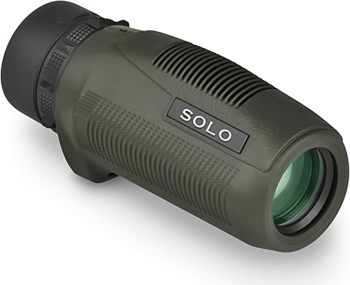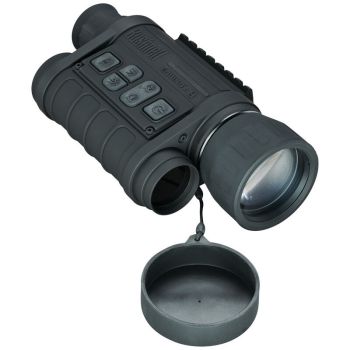- Compact size
- Lightweight
- Durable build
- Waterproof and fog-proof
- Clear optics
- Night vision capabilities
- Digital zoom
- Recording feature
- Durable design
- Clear images in low light
- Limited field of view
- Heavier for prolonged use
Vortex Optics Solo 10x25 vs Bushnell Equinox Z
When it comes to portable and versatile optics, monoculars are a popular choice among outdoor enthusiasts, hunters, and nature observers. Two notable options in this category are the Vortex Optics Solo 10x25 and the Bushnell Equinox Z. In this comparison, we'll delve into the features, performance, and overall value of these two products to help you decide which one best suits your needs.
Optical Quality
Both the Vortex Optics Solo 10x25 and the Bushnell Equinox Z offer impressive optical quality, but they differ in their approach. The Vortex Solo features a 10x magnification with a 25mm objective lens, providing a clear and sharp image with minimal distortion. The Bushnell Equinox Z, on the other hand, boasts a 6x magnification with a 50mm objective lens, offering a wider field of view and better low-light performance.
The Vortex Solo's optics are designed to provide a more detailed and intimate look at distant objects, making it ideal for birdwatching, hunting, or observing wildlife. In contrast, the Bushnell Equinox Z's wider field of view and larger objective lens make it better suited for surveillance, search and rescue, or general observation.
Design and Build
The Vortex Optics Solo 10x25 is a compact and lightweight monocular, weighing in at just 5.8 ounces. Its ergonomic design fits comfortably in the palm of your hand, making it easy to carry and use on the go. The Bushnell Equinox Z, while slightly larger and heavier (12.8 ounces), features a more rugged and durable build, with a rubberized exterior and IPX7 waterproof rating.
Both monoculars are designed to withstand the elements, but the Bushnell Equinox Z's larger size and weight may make it more difficult to carry in a pocket or purse. However, its added bulk also provides a more stable platform for observation, reducing shake and movement.
Night Vision Capabilities
One of the standout features of the Bushnell Equinox Z is its built-in night vision capability. This monocular uses an infrared illuminator to enhance low-light viewing, allowing you to observe objects in complete darkness. The Vortex Optics Solo 10x25 does not have this feature, relying on available light for observation.
If night vision is a critical requirement for your use case, the Bushnell Equinox Z is the clear winner. However, if you primarily plan to use your monocular during daylight hours or in well-lit environments, the Vortex Solo's superior optical quality and compact design may be more appealing.
Additional Features
Both monoculars offer a range of features that enhance their usability and functionality. The Vortex Optics Solo 10x25 includes a close focus distance of 6.5 feet, making it suitable for observing objects at closer ranges. The Bushnell Equinox Z, on the other hand, features a video output and USB connectivity, allowing you to capture and share images or videos.
Conclusion
In conclusion, the Vortex Optics Solo 10x25 and the Bushnell Equinox Z are both high-quality monoculars that cater to different needs and preferences. If you prioritize optical quality, compact design, and versatility, the Vortex Solo is an excellent choice. However, if night vision capabilities, a wider field of view, and rugged build are more important to you, the Bushnell Equinox Z is the better option.
Ultimately, when selecting between these two monoculars, consider your specific use case and requirements. Whether you're a hunter, birdwatcher, or outdoor enthusiast, there's a monocular on the market that can enhance your experience and provide a new perspective on the world around you.































